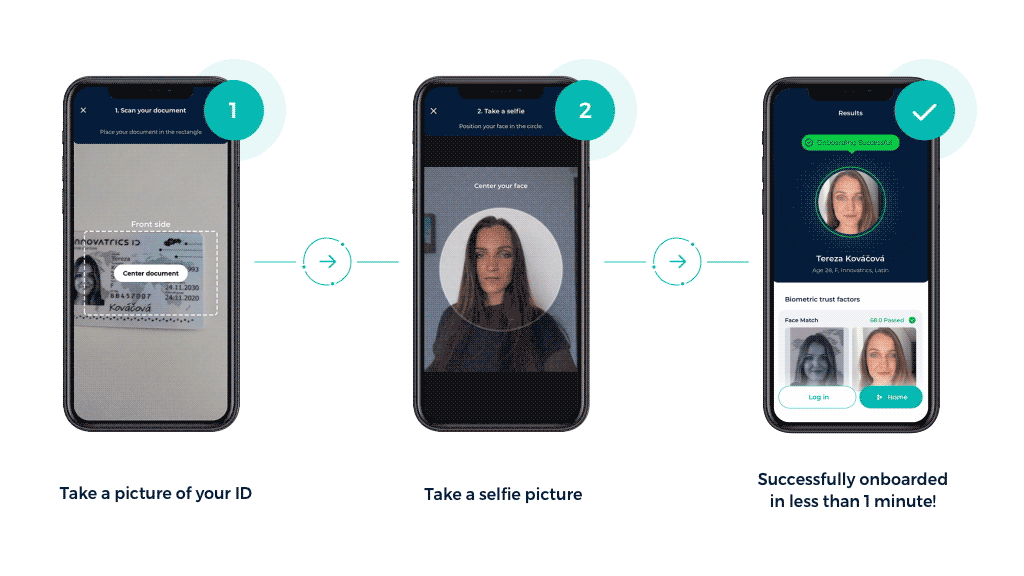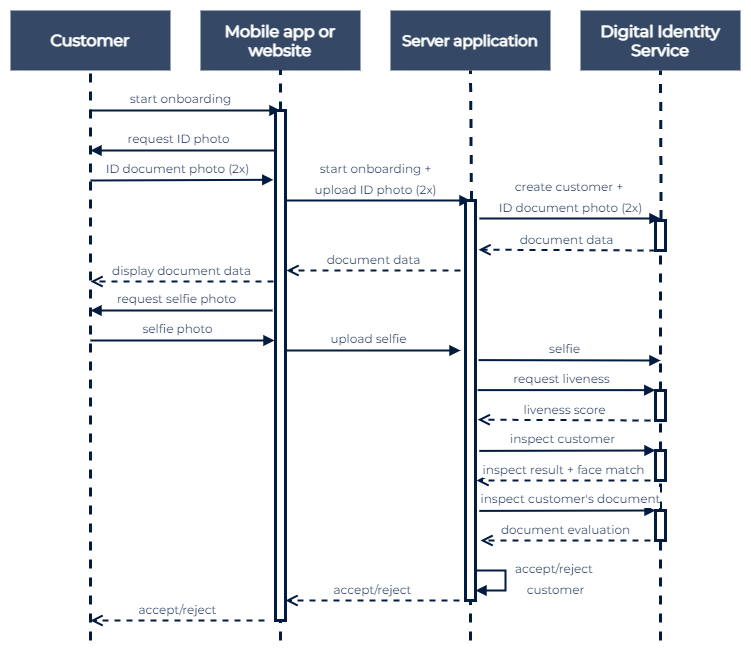Online Identity Verification
The Digital Onboarding Toolkit allows system integrators and solution developers to easily implement remote identity verification or digital onboarding applications. The identity of a customer (or in general, the identity of any user) is verified by matching their selfie with their identity document face portrait.
This can be done using the customer’s smartphone or notebook with our industry-leading facial biometric and liveness detection algorithms. After the identity document is captured, DOT can recognize all the data fields of the identity document and extract the data by using our proprietary OCR technology, which is available as a backend service.

Demo Applications
You can try out the remote identity verification process with our smartphone demo apps.
 |  |
|---|
A browser demo of the remote identity verification process for notebooks or smartphones can be tested here.
| Web Demo |
|---|
Steps in the Process
Identity Document Auto Capture
As a first step it is recommended to take a photo of the user’s identity document with the best possible quality for OCR. Mobile and web auto capture components guide the user with positioning the camera and taking the photo to automatically meet the requirements for OCR. Read more: Functionalities - Document Auto Capture
Optical Character Recognition
The identity document photo is then uploaded to the Digital Identity Service (DIS) and assigned to the user whose identity is being verified. DIS identifies the identity document type and extracts all the text fields and the photo and signature, if present. Read more: Functionalities - Optical Character Recognition
Face Auto Capture
The mobile components guide the user to take a selfie that meets process requirements, such as ICAO quality for face matching and requirements for passive liveness detection. It will guide the user to position their face correctly. Read more: Functionalities - Face Auto Capture
Liveness Detection
Liveness detection ensures that the selfie photo is genuine, and detects potential presentation attacks. Passive liveness works with a single photo, while active liveness needs the user to perform movement and requires more photos. Read more: Functionalities - Passive Liveness and Active Liveness Detection
Face Matching
This matches the user’s selfie with their identity document face portrait using our industry-leading facial biometric algorithm. Read more: Functionalities - Biometric Face Matching
Customer Trust Evaluation
When both the user’s ID document photo and selfie photo are provided to the Digital Identity Service, it calculates trust score for the user by combining and crosschecking various details extracted from the photos. Read more: Functionalities - Trust evaluation
Document Authenticity Check
DIS uses various methods to detect whether the identity document provided for identity verification was genuine or fraudulent in order to avoid identity fraud. This is done by evaluating and cross-checking multiple parameters and by additional functions. In the case of electronic machine readable documents, NFC reading and authentication can be used as an additional document authenticity check. Read more: Functionalities - Document Authenticity Detection and NFC Reading
Online Identity Verification Process Flow
A common implementation of the process is illustrated in the sequence diagram below.
